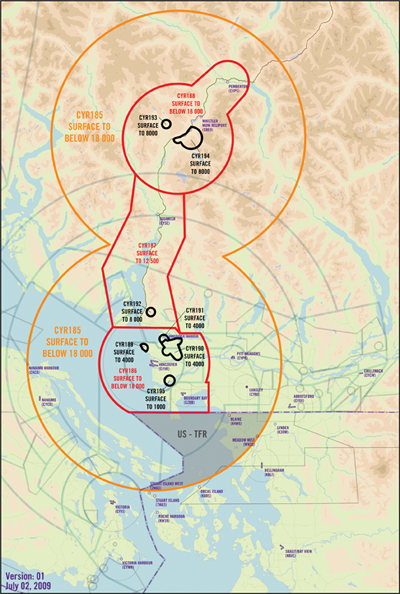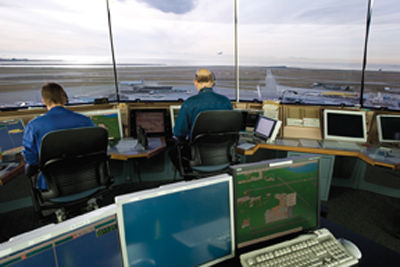
Features
Safety
Managing the Skies: Part Two
As airlines worldwide restructure to traverse a challenging fiscal landscape, air navigation service (ANS) providers around the world are modernizing their air traffic management (ATM) systems.
September 29, 2009 By James Marasa
As airlines worldwide restructure to traverse a challenging fiscal landscape, air navigation service (ANS) providers around the world are modernizing their air traffic management (ATM) systems. In the first part of Managing the Skies in the July/August issue of Wings, some massive technological undertakings in both the United States and Europe aimed at reshaping the incumbent landscape of air traffic management were highlighted. As suggested in part one, the Federal Aviation Administration’s (FAA) “NextGen” mandate to systematically replace ground-based radar with automatic dependent surveillance-broadcast (ADS-B) technology may only lead to marginal gains in efficiency at best in what is presently congested radar airspace. On the other hand, efficiency gains are expected to be significant where ADS-B implementation is able to eliminate current gaps in radar coverage.
 |
|
What are the technological solutions aimed at shoring up system efficiencies in Canada, and what does that mean for users moving forward? Canada’s northern airspace, a region that has traditionally remained far from view of terrestrial radar sources, offers a canvas on which ADS-B and its core benefits may be uniquely appreciated. Last January, ADS-B was introduced to the Hudson’s Bay region and what was once 850,000 square kilometres of non-radar airspace is now illuminated on the consoles of air traffic controllers in Edmonton and Montreal.
Longitudinal separation between ADS-B equipped aircraft operating within 1,000 feet of one another may now be reduced from 30 nautical miles down to five – the same standard as if the aircraft were operating within radar coverage. With roughly 35,000 flights per year over-flying Hudson’s Bay en route to Europe and Asia, the economic impact to these operators is expected to be meaningful. Nav Canada is forecasting cumulative savings in the ballpark of 18 million litres of fuel and 50,000 tonnes of carbon dioxide emissions annually.
Though ADS-B will provide some efficiency gains to aircraft operating in the en route phase of flight, delays incurred while aircraft are still on the ground represent a far greater burden to on-time performance. In light of this, methods to improve runway and taxiway surveillance at Canadian airports are being employed to mitigate the effects of inclement weather.
Montreal’s Pierre Elliot Trudeau airport, in partnership with Nav Canada, will soon be implementing a technology known as multi-static dependant surveillance (MDS) which will provide air traffic controllers with an enhanced picture of ground movements during conditions of reduced visibility.
Under most circumstances, ground controllers are able to visually observe aircraft and vehicle movements on the apron and taxiways. However, efficiency can be impacted during poor weather as controllers must rely on radar returns in conjunction with radio reports from aircraft and vehicles in order to coordinate surface movements.
 |
|
| Additional controlled airspace and restricted areas will be established around Vancouver and Whistler to facilitate the increased traffic and security demands of the Winter Olympics. (Courtesy of the Vancouver ACC – AIP Supplement (not for navigation)) |
According to John Crichton, president and CEO of Nav Canada, radar has limitations due to obstacles on the ground as line-of-sight is required between the target and the radar source in order to provide an accurate and reliable return. Using MDS, multiple ground-based sensors set up around the airport will be utilized to triangulate an aircraft’s location using its transponder signal. Crichton says that MDS will augment surface surveillance methods already in place at Trudeau. By allowing controllers a more complete traffic picture, Crichton believes that MDS, once fully implemented, will help to reduce delays and lower fuel costs during periods of low visibility. Similar technology is already employed at major airports around the world including London Heathrow and Paris Charles de Gaulle.
A uniquely daunting challenge has been put to Vancouver this winter as their airspace will face a world-class test of efficiency. From late January to March of 2010, the Vancouver Flight Information Region (FIR) will be implementing a set of procedures tailored to meet the increase in traffic and security responsibilities as the nations of the world set their sights on the 2010 Olympic Winter Games.
“We are expecting additional 500 to 600 aircraft movements over the busiest days,” says Jeff Dawson, Shift Manager responsible for Olympic preparations at the Vancouver Area Control Centre (ACC) in Surrey, B.C.
With a large percentage of delays worldwide attributable to limited airport arrival rates, preparations are underway to cushion the expected increase in workload. Dawson is anticipating an additional 250 to 300 non-scheduled arrivals on the day of the Opening Ceremonies alone.
Some have expressed concern over the Vancouver Airport Authority’s capability to handle winter weather conditions. Fears are that the snowstorms that reduced YVR’s arrival rate to, at times, four aircraft per hour over last Christmas season could wreak logistical havoc during the Olympics. However, over 230 million dollars in capital projects was invested last year in infrastructure upgrades – the majority of which will be completed by the end of 2009, prior to the start of the Olympics. Also, an additional seven pieces of snow removal equipment are being added to the airport’s contingent of 116 snowplows, sweepers and fleet vehicles.
Dawson adds that airspace planners have visited the last five Summer and Winter Olympic cities to learn what has worked elsewhere and that Vancouver will be ready. Success in Dawson’s eyes will be if air traffic control can remain clear of the limelight. “It’s a sporting event,” he says, “no one wants to remember their flight.”
Not only at YVR will increased traffic be a consideration – with the Sea to Sky highway expected to incur heavy congestion – but athletes and VIP’s will routinely be ferried up and down Howe Sound via helicopters and float planes operating under VFR. Since radar coverage in this area is currently largely obscured due to mountainous terrain, multi-lateration (MLAT) technology will be set up using ground stations installed between Vancouver and Whistler to allow for surveillance of these aircraft in a fashion similar to radar. With the ability to “see” low-level traffic in area, the Vancouver ACC is dedicating a team of 14 controllers and a traffic management unit (TMU) to provide traffic advisory service to these aircraft during the Olympics.
 |
|
| On the day of the Opening Ceremonies for the 2010 Winter Olympics, the Vancouver Tower is expecting an additional 200 to 300 non-scheduled arrivals. (Photo courtesy of Nav Canada)
|
While MLAT will allow for a safer operation of traffic operating in what is currently beyond the scope of radar coverage, Trevor Johnson, Nav Canada general manager of the Vancouver FIR, explains that technology is only part of the solution. He stresses that to create sustainable modifications to an entrenched operational methodology requires incorporation with the people who can best make it happen.
“My idea might work,” says Johnson, “but put (a problem) in the hands of the controllers and they are empowered.” Johnson explains that as both airlines and controllers want efficiency, collaboration with the users of the ATC system will ultimately yield the most productive end result.
In the modern era, technology has the potential to drastically alter the way that air traffic management is conducted. However, as Johnson says, the best solutions are ones that incorporate the person in order to strike a balance with the technology.
While fears of human error have led to great technological redundancies, it is easy to forget that the human element is what ultimately drives the machine forward and delivers the most creative and flexible solutions to complex challenges. There are some excellent examples unfolding here in Canada that illustrate how technological advances in conjunction with human innovation are creating a more efficient ATC system for airlines and operators.
These factors will play a crucial role as the Vancouver ACC prepares for its own Olympic event. And this winter, the world will be watching.